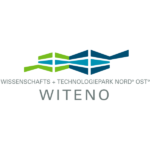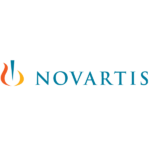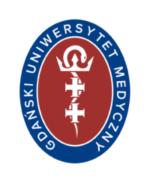Bioeconomy by-products represent enormous value
One of the main ambitions of NordBio, a large bioeconomy programme launched under the Icelandic chairmanship of the Nordic Council of Ministers, is to promote innovative use of the region’s biological resources. Key focus areas are food product innovation, sustainability in the food industry and increased biomass production, with emphasis on creating value from underutilised resources and by-products.
Optimised utilisation for future prosperity
Icelandic R&D company Matís is in charge of Innovation in the Nordic Bioeconomy, one of NordBio’s five components. Its director, Sveinn Margeirsson, explains that a prosperous bioeconomy must be based on responsible, efficient and innovative use of biological resources. With the rapidly growing global population and food demand, he says, this is more important than ever.
“We need to increase food production by up to 70 per cent in the next 30-50 years. At the same time, we’re discarding 30-40 per cent of all the food we produce. The question is not only how much more food we need to produce, it’s also how much more of it we should be utilising.”
As a considerable part of the land suitable for agriculture is already being utilised, optimised use of the available resources is an important part of the solution. Margeirsson also predicts that a large share of the increase must come from biological resources from the sea.
“70 per cent of the earth’s surface is covered with water. There are extreme quantities of biomass in the sea, which, judging by all indications, could be utilised much better than today,” he says.
Underutilised resources and valuable side streams
The overall objective of Innovation in the Nordic Bioeconomy is to optimise the value created from biological resources. It focuses on introducing underutilised resources into product development and encouraging industrial symbiosis, where by-products from one industry become valuable raw materials in another. The transformation of the bioeconomy requires co-ordinated research and innovation efforts, which is why the key Nordic institutions in these fields, NordForsk and Nordic Innovation, will work closely together on the initiative.
“We need to use our best knowledge to treat the resources right, produce valuable materials early in the process, and use surplus materials to generate value in other sectors,” Margeirsson says.
Sigrún Elsa Smáradóttir, research group leader at Matís’ Business Development Unit, explains that the bioeconomy’s side streams generate value in various ways, i.e. as food ingredients and materials used for production of pharmaceuticals, cosmetics and chemicals.
“Our approach to product development in the bioeconomy is to look at the side streams and think of ways to transform them into products that can be sold on the market,” she says. 30 products are now being developed as part of the initiative, under guidance from Matís, Inuili School in Greenland and Faeroese iNOVA.
The projects include development of food products containing seaweed – a widely available but underutilised Nordic bioresource – such as barley seaweed pasta, a mayonnaise based on Omega 3 fatty acids, and skyr with added seaweed, honey and blueberries. Innovative use of by-products counts a high protein fungus, grown on timber mass from the forestry industry, which is used as a protein source in aquaculture feed, and the extraction of chondroitin sulphate from shark soft bone. This active material is valuable to the pharmaceutical industry, due to its effects against rheumatic diseases in humans and animals.
More sustainable food production
Another main objective is to increase sustainability in the Nordic food industry. Here, the idea is to produce necessary inputs into food production in the vicinity of the using area. This would improve the region’s food security and reduce greenhouse gas emissions from transportation.
“We’re looking into production of feed and fertilisers near the agricultural sites. Minimising import of these materials would make agriculture, aquaculture and food production more sustainable,” Smáradóttir says, adding that such an approach would lead to a more self-sufficient Nordic food production.
“In Iceland, for instance, we say that we’re self-sufficient with meat and dairy products. But it’s not entirely true if we need to import both feed and fertiliser to produce it.”
Increased biomass production in the region
Lastly, Innovation in the Nordic Bioeconomy aims to increase biomass production. This entails producing more bio-based products such as food and feed, but also biofuels and bioenergy. A delicate question related to increased biofuel production, identified as one of the ways to phase out fossil fuels, is the choice between using bioresources to produce energy or food.
“That’s a dilemma we need to carefully consider. Only those resources that cannot be used for food and food production should be utilised for production of biofuels,” says Smáradóttir.
Also in this work, the attention will be directed towards by-products.
“Biofuels cannot compete with the market prices of fuel today. So it’s very important to see what kind of value adding compounds we can isolate from the production process.”
Opportunities for local and regional economies
The bioeconomy’s value is not only to be found in the sheer use of biological resources. A wide range of industries and service sectors are linked to the bioeconomy, and it is moreover a vital contributor to local economies. NordRegio – Nordic Centre for Spatial Development has looked into this aspect through a range of case studies in the Nordic countries. The findings from these studies will be used to identify further opportunities for product development in the Nordic countries.
“Tourism represents a large potential as it makes way for increased production of local food products. This strengthens the rural areas and helps them build an alternative industry, based on the use of bioresources,” Smáradóttir explains.
Margeirsson sees a strengthened bioeconomy as a key instrument to maintain Nordic culture and get the most out of the region’s human capital – in urban and rural areas alike.
“The value creation depends on people that live outside the large urban centres and are prepared to grow the land, catch the fish and process the raw materials. These people and their skills are essential in developing the bioeconomy towards its next stage.”
Article by: Páll Tómas Finnson
ScanBalt News
17 March 2025
LifeScience4EU Conference 2025 | 15-16 May | Krakow












